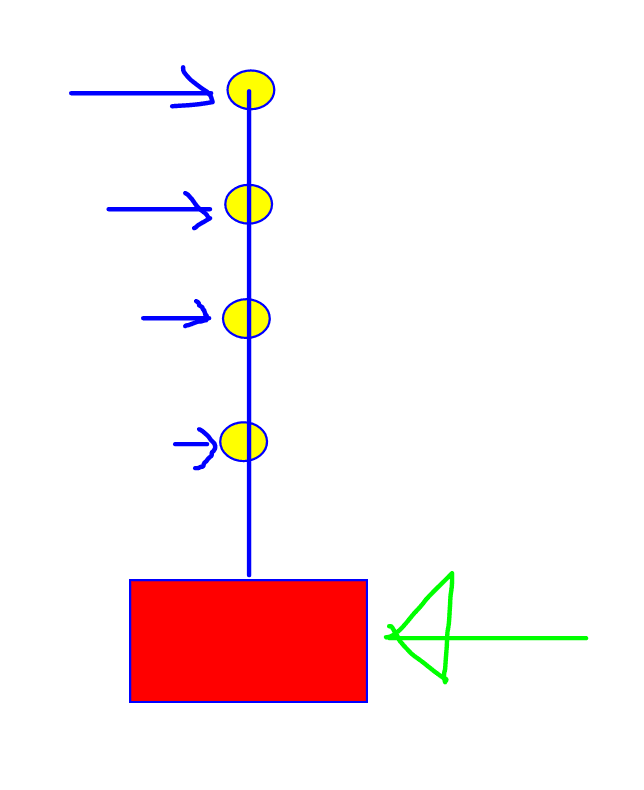-
1
- #1
1.0 INTRODUCTION
1) Like Jon Snow, I know nothing. You've been warned.
2) This is going to be a multi post thread setup, TLDR be damned. To that end, I ask that nobody respond until I've made it clear that I'm done with the initial setup.
For some time now on this forum, I have been recommending that people keep in mind that the above grade seismic forces shown in blue below are not real but, rather, "fictitious forces" representing dynamic, inertial effects. That, in keeping with d'Alembert's principle that many of us learned about in university. Tomfh described this succinctly in another, recent thread:
I've been suggesting that folks focus on viewing internal member stresses as arising from imposed displacements generated by the base excitation. While I still think that perspective has some utility, I've come to believe that the notion that inertial forces are something less than "real" is incorrect. Internal forces do arise from imposed displacements but those displacements are "imposed" by real forces I now feel.
Oops... my bad.

1) Like Jon Snow, I know nothing. You've been warned.
2) This is going to be a multi post thread setup, TLDR be damned. To that end, I ask that nobody respond until I've made it clear that I'm done with the initial setup.
For some time now on this forum, I have been recommending that people keep in mind that the above grade seismic forces shown in blue below are not real but, rather, "fictitious forces" representing dynamic, inertial effects. That, in keeping with d'Alembert's principle that many of us learned about in university. Tomfh described this succinctly in another, recent thread:
Tomfh said:Oh you meant our force arrows on the building (which combine into base shear) don't just appear from thin air and start pushing on the building?
I've been suggesting that folks focus on viewing internal member stresses as arising from imposed displacements generated by the base excitation. While I still think that perspective has some utility, I've come to believe that the notion that inertial forces are something less than "real" is incorrect. Internal forces do arise from imposed displacements but those displacements are "imposed" by real forces I now feel.
Oops... my bad.





